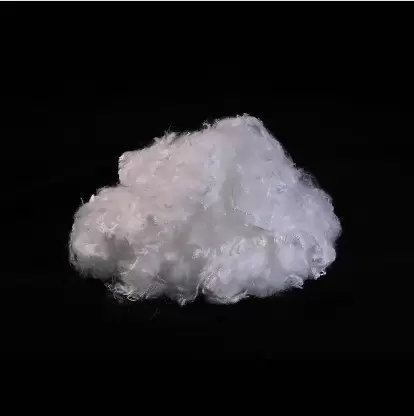
-
Telephone:+86-13157900738
-
Email:hewa-fibertex@hotmail.com

What are the factors affecting thedegradation of biodegradable fibers
Biodegradablefiber doesnot mean that it is completely environmentally friendly and can becompletely degraded. First, it must choose an appropriate environmentto degrade. If it is stored in an improper environment, it may causeenvironmental pollution and threaten groundwater. Then there are manyfactors that affect the degradation. If these factors change, it willalso affect the degradation.
(1) Effect ofpH value on biodegradable fiber
Mader et al. believe that thechange of pH value has a great influence on the hydrolysis rate ofthe copolymer chain, but the degradation rate is not very differentin different parts of the organism. The degradation of the copolymercan form an acidic microenvironment, which promotes theself-catalysis of the copolymer, which leads to the acceleration ofits degradation.
(2) Effect of temperature on biodegradablefibers
In experiments, it is rare to see the relationshipbetween the degradation of materials and temperature, because invitro experiments are often carried out by simulating bodytemperature, and the body temperature does not change much. However,in the process of in vitro experiments, sometimes for the needs ofthe experiment, the temperature can be raised appropriately toshorten the experiment period. However, during the accelerateddegradation process, the temperature should not be too high or toolow, because the polymer will have side reactions when thetemperature is too high; when the temperature is too low, the purposeof accelerated degradation cannot be achieved. Therefore, in order toavoid the influence of temperature and air flow on biodegradablefibers, biodegradable fibers are stored in a low-temperature sealedenvironment.
(3) Effect ofmolecular weight on biodegradable fibers
Wu et al. believed thatthe hydrolysis rate of the material was significantly affected by themolecular weight and distribution of the copolymer. This is mainlybecause each ester bond may be hydrolyzed, and the ester bondhydrolysis on the molecular chain is irregular. When the polymermolecular chain is longer, the more sites it can undergo hydrolysis,the faster the degradation. .
(4) Effect of material structureonbiodegradable fibers
Anhydridesand orthoesters are easily hydrolyzed. Li et al. believed that thequality and molecular weight of the comb copolymer decreased rapidlydue to the polarity of the skeleton, which was conducive to thecleavage of the ester bond. Therefore, the degradation rate of thecomb molecular copolymer is larger than that of the linear molecule.
(5) Theeffect of monomer composition ratio on biodegradable fibers
Thedegradation behavior of materials is related to the physical andchemical properties of materials. The polarity, molecular weight anddistribution of polymers all affect the degradation performance ofmaterials. After research, Wu et al. believed that the degradation ofthe copolymer had a great relationship with the molecular weight andcrystallinity of the copolymer. For example, the crystallinity ofglycolide and lactide copolymers is lower than that of thehomopolymers of the two monomers. Glycolic acid is more hydrophilicthan lactic acid. Therefore, the hydrophilicity of PGLA copolymercontaining more glycolide is better than that of PGLA copolymer richin lactide, so the degradation rate is faster. The hydrophilicpolymer has a large water absorption capacity, and the internalmolecules of the material can fully contact with the water molecules,and the degradation rate is fast. On the contrary, the internalmolecules of hydrophobic polymer materials have less contact withwater molecules, and the degradation rate is slow.
 (6)Effect of enzymatic hydrolysis on biodegradable fibers
(6)Effect of enzymatic hydrolysis on biodegradable fibers
Manyreactions in living organisms lead to the degradation of polymers,including oxidation, chemical hydrolysis, and enzymatic reactions inbody fluids. Hollald et al. believe that in the early glass state,enzymes are difficult to participate in the degradation, butenzymatic hydrolysis is the main factor affecting the copolymer inthe rubber state.
(7) Effect of polymer affinity/hydrophobicityon biodegradablefibers
Hydrophilicpolymers can absorb a large amount of water, and the degradation rateis accelerated; hydrophobic polymers absorb less water, and thedegradation rate is slow. Especially polymers containing hydroxyl andcarboxyl groups are relatively easy to degrade



